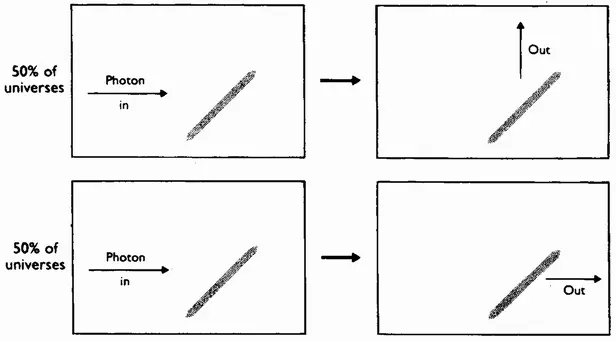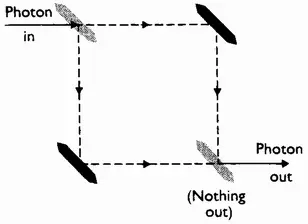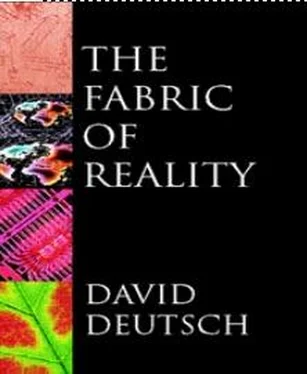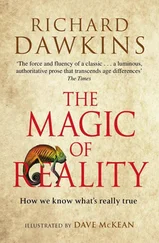David Deutch - The Fabric of Reality
Здесь есть возможность читать онлайн «David Deutch - The Fabric of Reality» весь текст электронной книги совершенно бесплатно (целиком полную версию без сокращений). В некоторых случаях можно слушать аудио, скачать через торрент в формате fb2 и присутствует краткое содержание. ISBN: , Жанр: Физика, Философия, на английском языке. Описание произведения, (предисловие) а так же отзывы посетителей доступны на портале библиотеки ЛибКат.
- Название:The Fabric of Reality
- Автор:
- Жанр:
- Год:неизвестен
- ISBN:0-7139-9061-9
- Рейтинг книги:4 / 5. Голосов: 2
-
Избранное:Добавить в избранное
- Отзывы:
-
Ваша оценка:
- 80
- 1
- 2
- 3
- 4
- 5
The Fabric of Reality: краткое содержание, описание и аннотация
Предлагаем к чтению аннотацию, описание, краткое содержание или предисловие (зависит от того, что написал сам автор книги «The Fabric of Reality»). Если вы не нашли необходимую информацию о книге — напишите в комментариях, мы постараемся отыскать её.
The Fabric of Reality — читать онлайн бесплатно полную книгу (весь текст) целиком
Ниже представлен текст книги, разбитый по страницам. Система сохранения места последней прочитанной страницы, позволяет с удобством читать онлайн бесплатно книгу «The Fabric of Reality», без необходимости каждый раз заново искать на чём Вы остановились. Поставьте закладку, и сможете в любой момент перейти на страницу, на которой закончили чтение.
Интервал:
Закладка:
However, real hurricanes and real butterflies obey quantum theory, not classical mechanics. The instability that would rapidly amplify slight mis-specifications of an initial classical state is simply not a feature of quantum-mechanical systems. In quantum mechanics, small deviations from a specified initial state tend to cause only small deviations from the predicted final state. Instead, accurate prediction is made difficult by quite a different effect.
The laws of quantum mechanics require an object that is initially at a given position (in all universes) to ‘spread out’ in the multiverse sense. For instance, a photon and its other-universe counterparts all start from the same point on a glowing filament, but then move in trillions of different directions. When we later make a measurement of what has happened, we too become differentiated as each copy of us sees what has happened in our particular universe. If the object in question is the Earth’s atmosphere, then a hurricane may have occurred in 30 per cent of universes, say, and not in the remaining 70 per cent. Subjectively we perceive this as a single, unpredictable or ‘random’ outcome, though from the multi-verse point of view all the outcomes have actually happened. This parallel-universe multiplicity is the real reason for the unpredictability of the weather. Our inability to measure the initial conditions accurately is completely irrelevant. Even if we knew the initial conditions perfectly, the multiplicity, and therefore the unpredictability of the motion, would remain. And on the other hand, in contrast to the classical case, an imaginary multiverse with only slightly different initial conditions would not behave very differently from the real multiverse: it might suffer hurricanes in 30.000001 per cent of its universes and not in the remaining 69.999 999 per cent.
The flapping of butterflies’ wings does not, in reality, cause hurricanes because the classical phenomenon of chaos depends on perfect determinism, which does not hold in any single universe. Consider a group of identical universes at an instant at which, in all of them, a particular butterfly’s wings have flapped up. Consider a second group of universes which at the same instant are identical to the first group, except that in them the butterfly’s wings are down. Wait for a few hours. Quantum mechanics predicts that, unless there are exceptional circumstances (such as someone watching the butterfly and pressing a button to detonate a nuclear bomb if it flaps its wings), the two groups of universes, nearly identical at first, are still nearly identical. But each group, within itself, has become greatly differentiated. It includes universes with hurricanes, universes without hurricanes, and even a very tiny number of universes in which the butterfly has spontaneously changed its species through an accidental rearrangement of all its atoms, or the Sun has exploded because all its atoms bounced by chance towards the nuclear reaction at its core. Even so, the two groups still resemble each other very closely. In the universes in which the butterfly raised its wings and hurricanes occurred, those hurricanes were indeed unpredictable; but the butterfly was not causally responsible, for there were near-identical hurricanes in universes where everything else was the same but the wings were lowered.
It is perhaps worth stressing the distinction between unpredictability and intractability. Unpredictability has nothing to do with the available computational resources. Classical systems are unpredictable (or would be, if they existed) because of their sensitivity to initial conditions. Quantum systems do not have that sensitivity, but are unpredictable because they behave differently in different universes, and so appear random in most universes. In neither case will any amount of computation lessen the unpredictability. Intractability, by contrast, is a computational-resource issue. It refers to a situation where we could readily make the prediction if only we could perform the required computation, but we cannot do so because the resources required are impractically large. In order to disentangle the problems of unpredictability from those of intractability in quantum mechanics, we have to consider quantum systems that are, in principle, predictable.
Quantum theory is often presented as making only probabilistic predictions. For example, in the perforated-barrier-and-screen type of interference experiment described in Chapter 2, the photon can be observed to arrive anywhere in the ‘bright’ part of the shadow pattern. But it is important to understand that for many other experiments quantum theory predicts a single, definite outcome. In other words, it predicts that all universes will end up with the same outcome, even if the universes differed at intermediate stages of the experiment, and it predicts what that outcome will be. In such cases we observe non-random interference phenomena. An interferometer can demonstrate such phenomena. This is an optical instrument that consists mainly of mirrors, both conventional mirrors (Figure 9.1) and semi-silvered mirrors (as used in conjuring tricks and police stations and shown in Figure 9.2.). If a photon strikes a semi-silvered mirror, then in half the universes it bounces off just as it would from a conventional mirror. But in the other half, it passes through as if nothing were there.

FIGURE 9.1 The action of a normal mirror is the same in all universes.

FIGURE 9.2 A semi-silvered mirror makes initially identical universes differentiate into two equal groups, differing only in the path taken by a single photon.
A single photon enters the interferometer at the top left, as shown in Figure 9.3. In all the universes in which the experiment is done, the photon and its counterparts are travelling towards the interferometer along the same path. These universes are therefore identical. But as soon as the photon strikes the semi-silvered mirror, the initially identical universes become differentiated. In half of them, the photon passes straight through and travels along the top side of the interferometer. In the remaining universes, it bounces off the mirror and travels down the left side of the interferometer. The versions of the photon in these two groups of universes then strike and bounce off the ordinary mirrors at the top right and bottom left respectively. Thus they end up arriving simultaneously at the semi-silvered mirror on the bottom right, and interfere with one another. Remember that we have allowed only one photon into the apparatus, and in each universe there is still only one photon in here. In all universes, that photon has now struck the bottom-right mirror. In half of them it has struck it from the left, and in the other half it has struck it from above. The versions of the photon in these two groups of universes interfere strongly. The net effect depends on the exact geometry of the situation, but Figure 9.3 shows the case where in all universes the photon ends up taking the rightward-pointing path through the mirror, and in no universe is it transmitted or reflected downwards. Thus all the universes are identical at the end of the experiment, just as they were at the beginning. They were differentiated, and interfered with one another, only for a minute fraction of a second in between.

FIGURE 9.3 A single photon passing through an interferometer. The positions of the mirrors (conventional mirrors shown black, semi-silvered mirrors grey) can be adjusted so that interference between two versions of the photon (in different universes) makes both versions take the same exit route from the lower semi-silvered mirror.
Читать дальшеИнтервал:
Закладка:
Похожие книги на «The Fabric of Reality»
Представляем Вашему вниманию похожие книги на «The Fabric of Reality» списком для выбора. Мы отобрали схожую по названию и смыслу литературу в надежде предоставить читателям больше вариантов отыскать новые, интересные, ещё непрочитанные произведения.
Обсуждение, отзывы о книге «The Fabric of Reality» и просто собственные мнения читателей. Оставьте ваши комментарии, напишите, что Вы думаете о произведении, его смысле или главных героях. Укажите что конкретно понравилось, а что нет, и почему Вы так считаете.












